The Ford Explorer is an important car in the manufacturer’s European EV journey. Following the Ford Mustang Mach-e, it’s become the second fully-electric car available from Ford in the region, and also the first specifically designed for European roads. With Explorer starting prices ranging between £39,875 and £53,975 depending on the model, it enters an increasingly packed electric SUV market. It’ll need to sway buyers away from other options such as the Tesla Model Y, Nissan Ariya, and Kia EV6, to name only a few.
Thanks to Ford, I got my hands on the Explorer for a week, testing it on everywhere from motorways to winding country roads. The specific model on test here is the extended range version of the Explorer, which consists of a larger 77kWh battery. In its top-end Premium trim level, with a large array of standard equipment, it offers a quoted combined range of around 354 miles.
First impressions
From the outside, the Explorer definitely delivers the American image Ford’s design team were aiming for, thanks to its high bonnet and overall rugged stance. Even though this EV is based on the same Volkswagen EV platform as the ID.4, you’d be hard pressed to tell from its looks, with this being a real head turner compared to the ID.4.
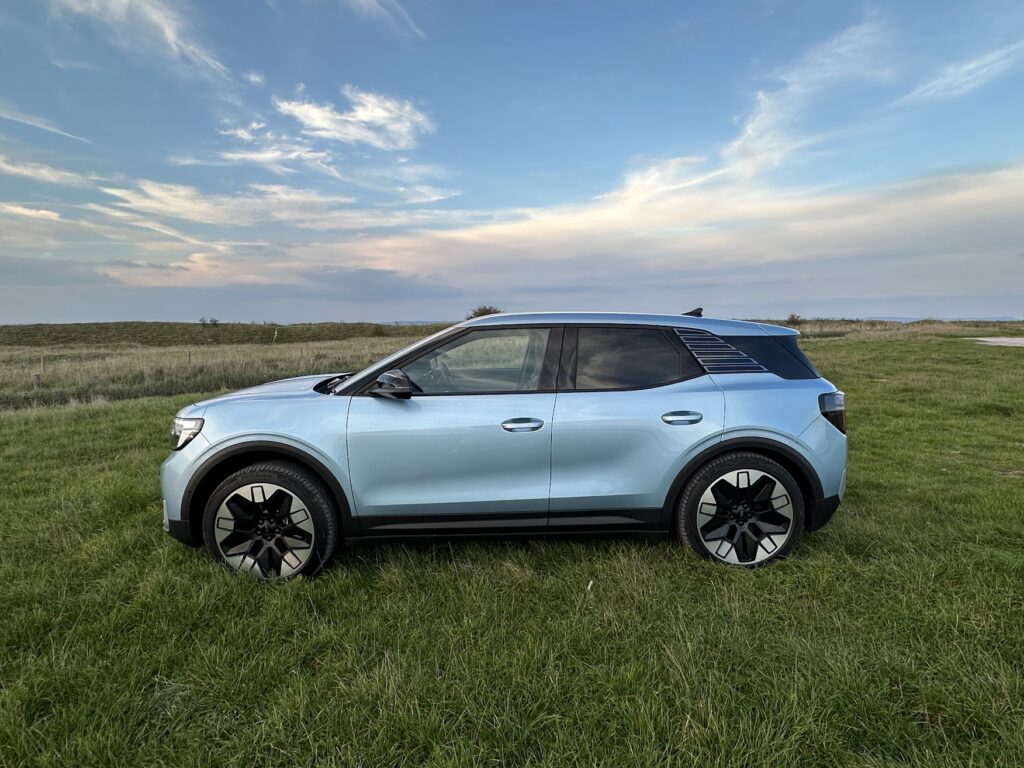

Interior space is what you’d expect for a car of this size, with a decently-sized boot, and a great amount of room in the rear seats. That’s partly thanks to the completely flat floor, due to the lack of a transmission tunnel. All back seats can be folded flat to turn the Explorer into a mini van, while there’s also a ski hatch through the middle rear seat – further living up to that Explorer nametag.
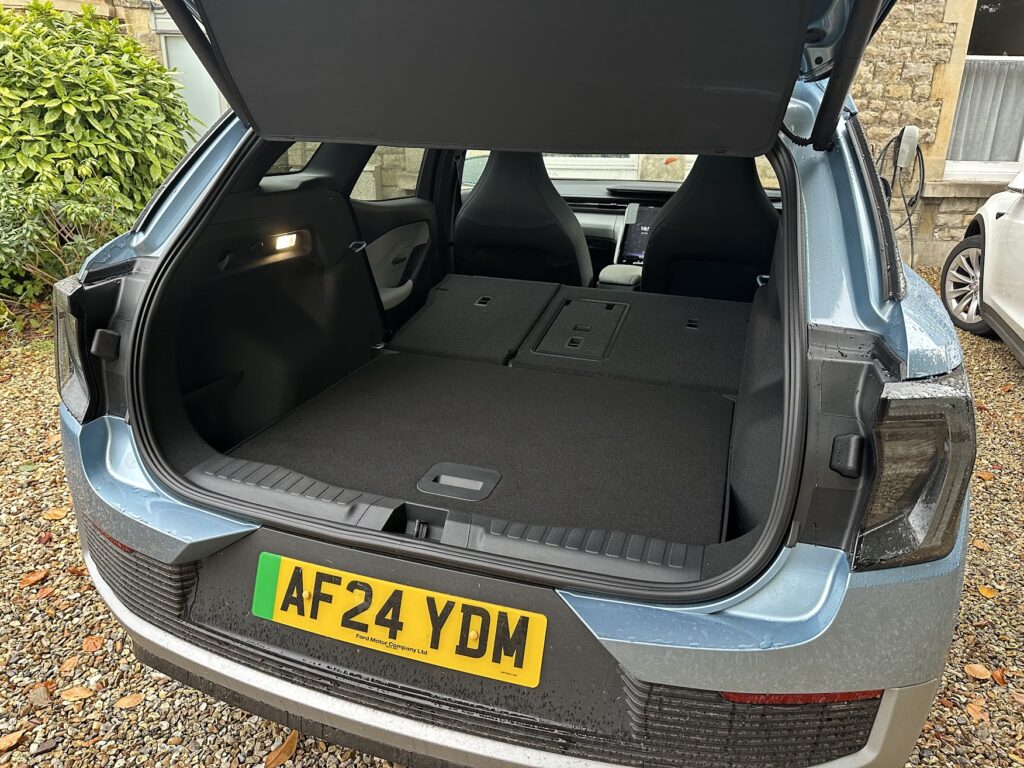
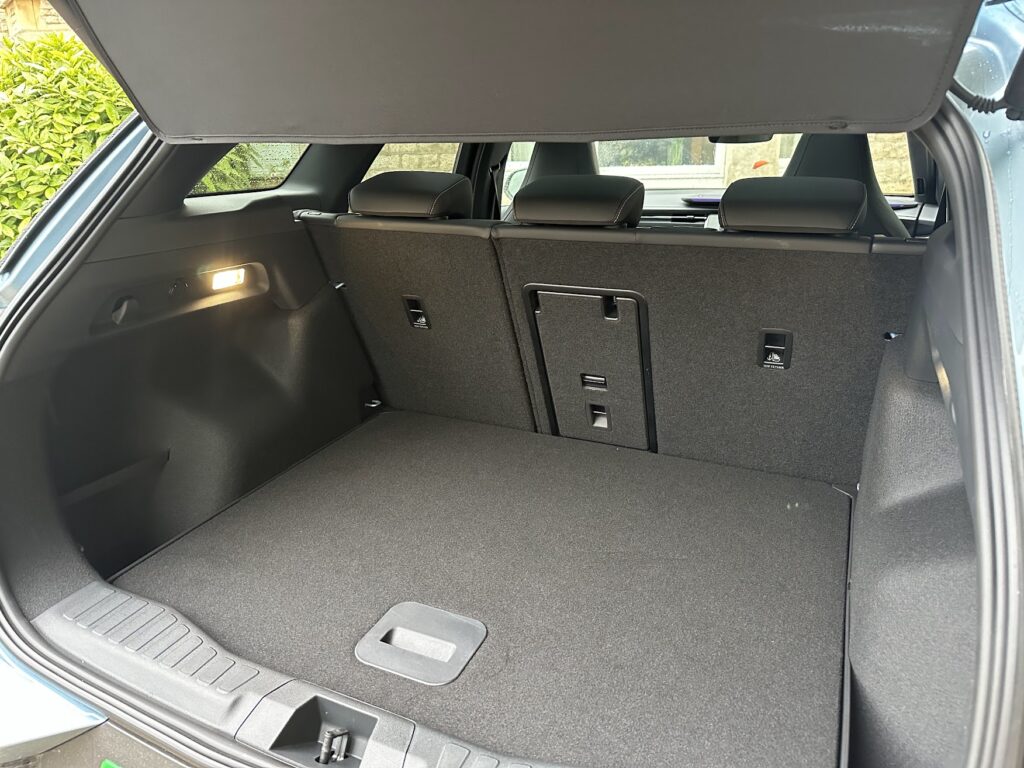

This premium specification, trimmed in Ford’s artificial leather, is a sustainability benefit, but still mimics the feel of a real leather interior really well. Interior luxuries include heated front seats, a massaging drivers seat, and a heated steering wheel. A head-up display also features, highlighting key information such as the speed limit, navigation directions, and your current speed.
The centre armrest hides a cavernous storage space between the driver and passenger, made possible by the lack of drivetrain components that would otherwise take up space on an ICE vehicle. This gives enough space to stow away a full-size laptop, and I also found it coming in handy for stowing a small food shop, instead of leaving your items to roll across the boot.
The vivid portrait screen is another highlight, thanks to its ability to pivot position – revealing a secret compartment that automatically locks when you leave the car. Pretty much everything is controlled through this central screen, save for a few shortcut buttons for defrosting and headlights to the right of the steering wheel. However, it’s easy to use, and frequently used menus can be set as shortcuts to the top of the screen. Climate control buttons also stay permanently visible at the bottom of the screen, without the need to go into another menu to change the temperature – a thing I find particularly frustrating on other EVs. Apple CarPlay and Android Auto are also supported as standard.
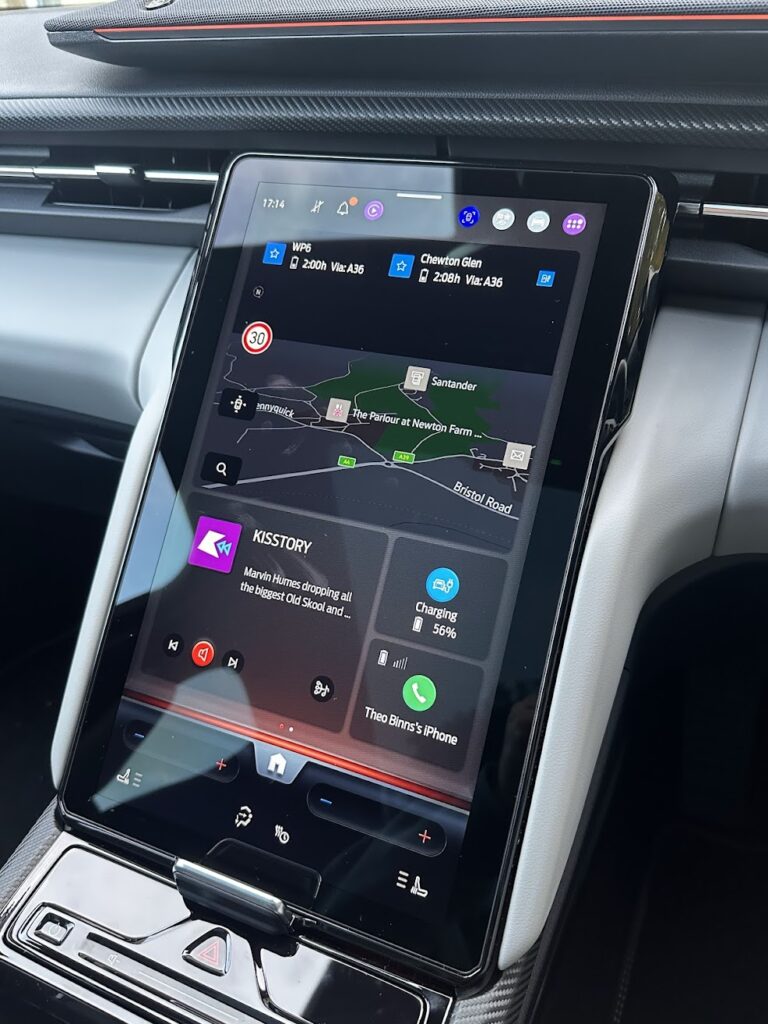


On the road

When it comes to driving feel, Ford has always been known for injecting great driving dynamics in its vehicles, and that’s carried on in the EV era with models such as the Mustang Mach-E and E-Transit – and the Explorer is no different, with a sporty feeling, that still doesn’t compromise on comfort. The extended range version delivers 282 horsepower and 545 Nm of torque. That latter torque figure is just a smidge under the new Porsche Macan Electric’s 563 Nm – pretty impressive. The more expensive dual-motor variant will deliver even more punch, but in my opinion, this long-range model offers more than adequate performance for daily driving.
Come night, and the Explorer’s on-board tech, particularly on this Premium trim level, shines. The LED matrix headlights are a highlight, which direct the high-beam around other traffic, stopping them from being blinded while also lighting up the road much more than conventional lights. These also lock on to road signs, highlighting important information that could otherwise go amiss. Once headlights switch on, so does the fully adjustable interior ambient lighting, adding to the Explorer’s premium feel.
Charging
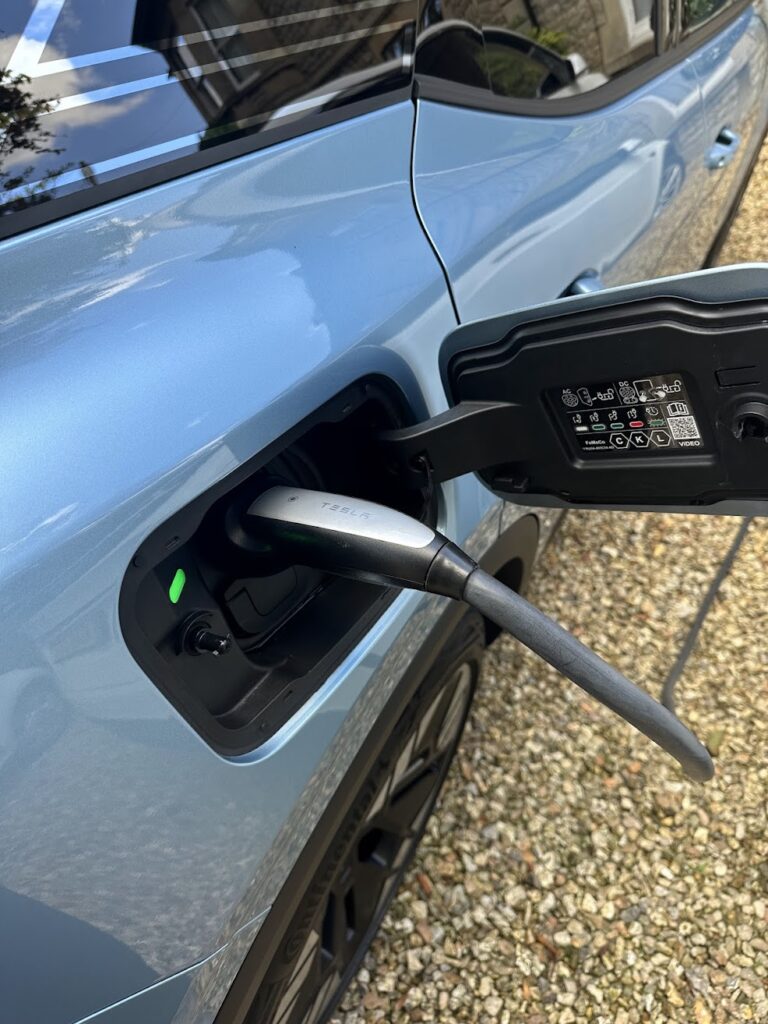
With the 77kWh extended range battery, as in this model, Ford quotes a drivable range of 354 miles – which rises to an even more impressive 374 miles, for the less heavily-equipped ‘Select’ trim. Its lengthy range meant that during my seven days with the Explorer, my average level of driving meant I never had to stop at a public charge point.
With lots of longer range EVs hitting the market, the ability to rely entirely on home charging will be increasingly feasible for those lucky enough to have the ability to charge at home – making this EV absolutely bargainous to charge up on an EV-specific tariff, compared to an equivalent petrol or diesel powered SUV. When it does come to public charging, the Explorer is capable of going from 10-80% charge in 28 minutes, at its maximum 135kW charging speed. With that large capacity battery, it’s not something that most people will be doing too often – most cars in the UK travel, on average, 142 miles a week.
Visibility of chargers through the infotainment system is top notch, much like the larger Peugeot E-5008 we tested recently. Using the voice command button to ask where the nearest chargers are works as it should, whilst planning a longer journey through the built-in navigation will pre-plan stops to recharge the car.
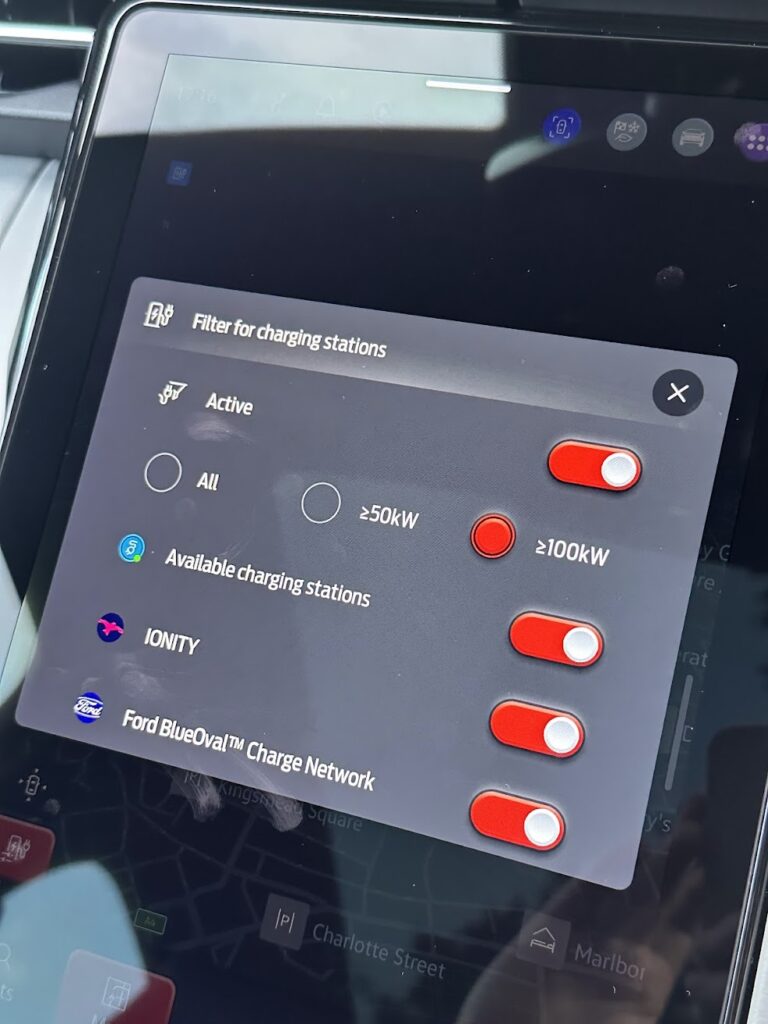
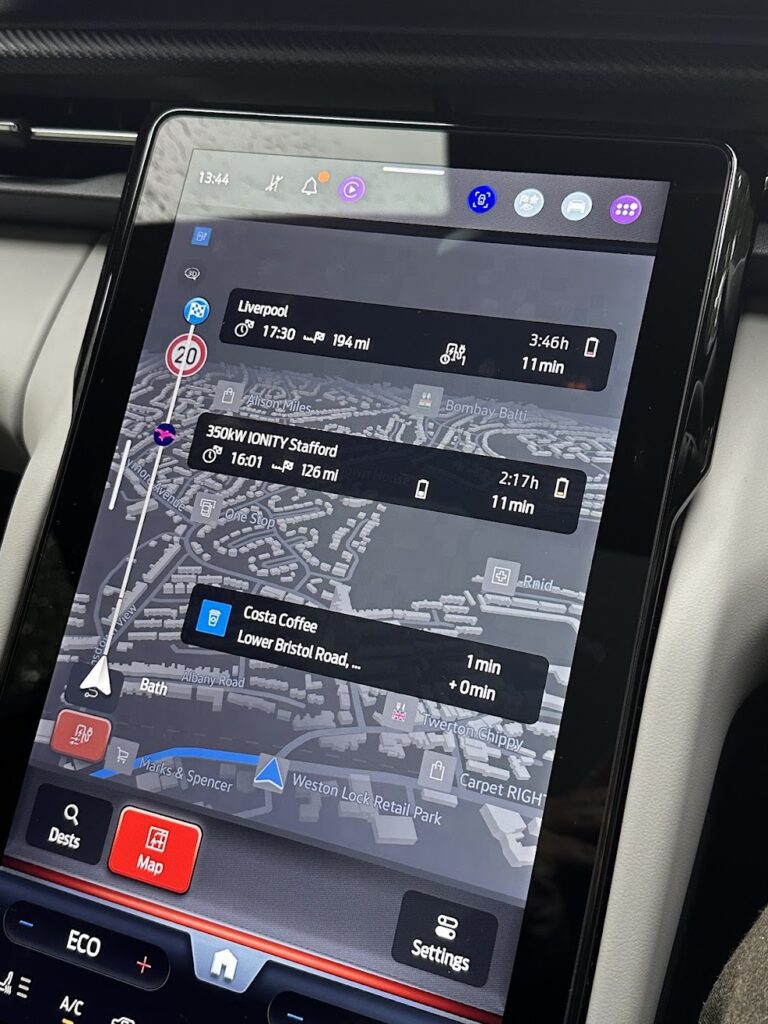

Summary
At the press event, Ford told us that they hope to differentiate the Explorer from its electric competition through three key characteristics: Adventure readiness, innovative features, and a car that is fun to drive. Through the heaps of practicality it offers, the mountain of technology on board, and its engaging driving feel, it’s safe to say that Ford has achieved this goal, standing out as a desirable option.
In the £53,000-plus spec tested, the Explorer exists as a fast, premium-feeling electric SUV. However, the much more affordable £39,875 model, which will go on sale before the end of the year, should show great value for money – offering a starting price lower than rivals such as the Model Y, and matching EVs such as the Nissan Ariya.
Specifications as tested: Ford Explorer Extended Range RWD 77kWh Premium
| Seats | 5 |
| Range | 354 miles |
| Maximum Charging Speed | 135kW |
| 0-62mph Time | 6.4 seconds |
| Top Speed | 112mph |
| Boot Space | 450 litres, 1,422 litres with rear seats folded |



